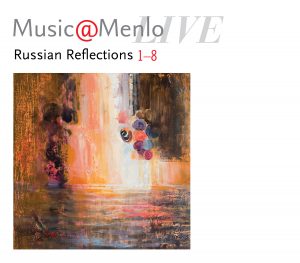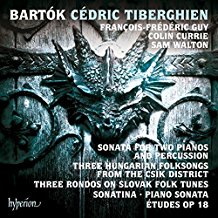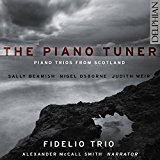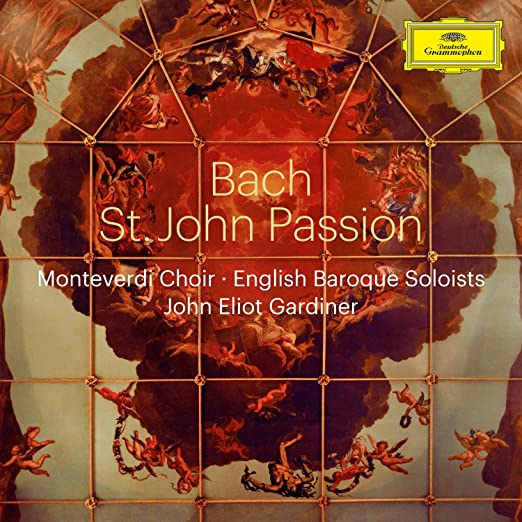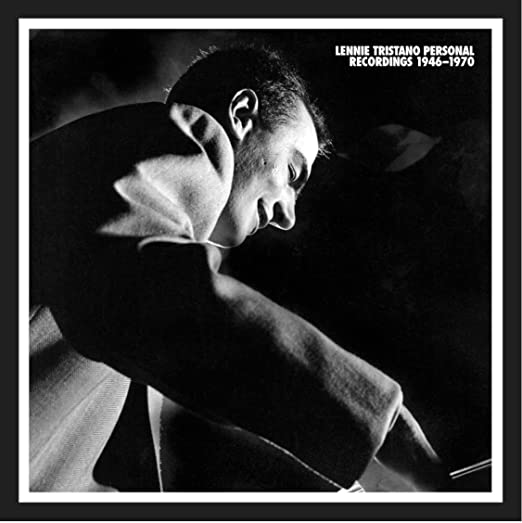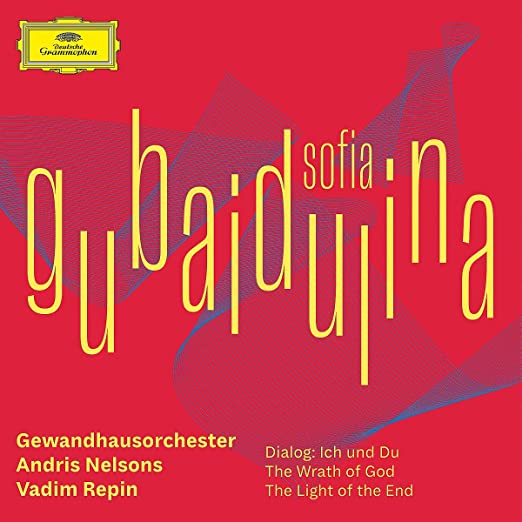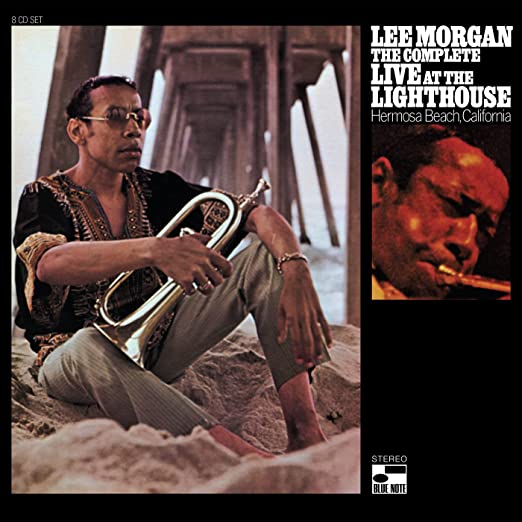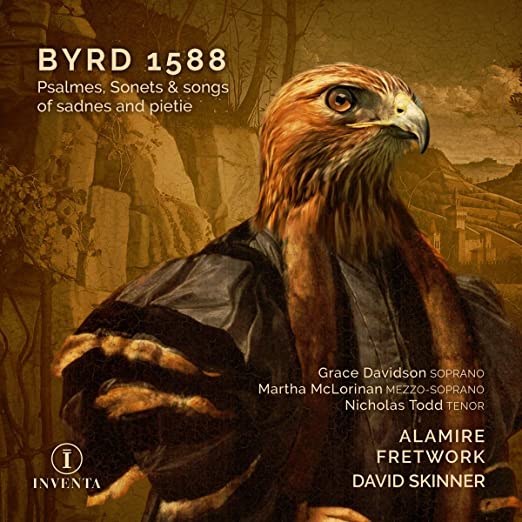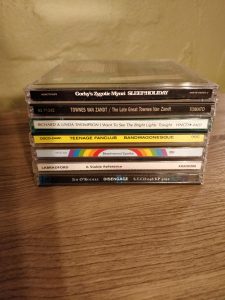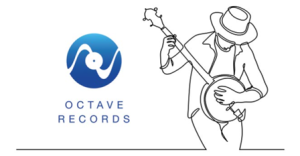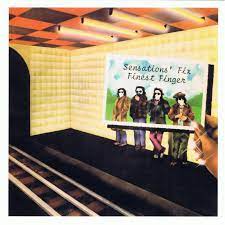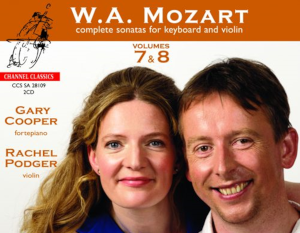Music@Menlo 'Live,' 2016 "Russian Reflections" . (8 discs), available separately or as a box set. www. musicatmenlo.org.
If you share Music@Menlo's enthusiasm for nineteenth century music, this latest edition of their annual set of (summer 2016) festival recordings will please you. It features a large group of minor and minor major Russian composers (plus Tchaikovsky and a handful of Shostakovich's and Prokofiev's less progressive works) surrounded by a large group of major European composers presumably to reinforce the cultural point that Russia was highly influenced by Western Europe in the nineteenth century and vice versa. We remember that the language of choice among well-to-do and educated Russians in the nineteenth century was French. The program's point is successfully made, the music is beautifully played by some well known and some less familiar but no less impressive musicians, and the recordings, as always under the hands of engineer Da Hong Seetoo, are the best around. Musically speaking, of course, Western Europe pretty much blows Russian away here. The Arenskys, Glinkas, Mussorgskys, and Tanyevs of the world can only take us so far; and speaking personally, Scriabin and Rachmaninoff can't take us too much further, though there are contributions by each of them here that are really fine.
Those who might prefer to hear the Russian (and Polish and Baltic) music that marks its emergence, rise, and near predominance in the world of international modernism and beyond—Stravinsky, Shostakovich's and Prokofiev's more radical music, and on to Schnittke, Penderecki, Gubaidulina, Ustvolskya, Silvestrov, Kanchelli, Vasks, and Auerbach—must look for another album with a different cultural and musical point to make. Raising this issue here is, of course, hardly fair. A critic is obliged to evaluate what's set before him, not wish for something else. The sound of the nineteenth century has been hugely influential in music history and there is still much to learn about it. Music@Menlo's 'Russian Reflections' has a great deal to teach; and there is plenty of music here to please, along with some nice surprises.
So what are the treasures in this set from the point of view of the record collector and music lover? (You can find the complete listing for each disc on the Music@Menlo website: http://musicatmenlo.org/live/discs?year=2016.
Volume 1: I cannot imagine Tchaikovsky's Serenade in C Major (1880) played any better than this—and a modest sized ensemble of fifteen musicians relieves its conspicuous romanticism of unwanted over-richness. It reminds us of a similar effect achieved by the chamber version version of Copland's Appalachian Spring: the strings here have great definition and an attractive crispness. All of this said, sweetness and elegance are the rule in this work. Those familiar with the various translations of Tolstoy will hear this work as the Garnets' view of nineteenth century Russia. Great recording quality, more than by the way.
Scriabin's Preludes for Piano (1896) exhibit a quiet rapture that is new to my experience of the composer, who is generally more dynamic and flamboyant. Pianist Lucille Chang is perhaps responsible for bringing a Keith Jarrett improvisation to mind. I have no idea what the time signature of these Preludes is, nor can I hear one. This is marvelous, prescient music, one of the Series' best surprises.
Volume 2: If you've not heard 16-18 year-old Mahler's Piano Quartet (1876-78), Wu Han, David Finckel, and friends will provide you with a fine opportunity. Musically it is comparable in quality to early Britten and is, of course, very much of its period, thus fitting well into the series' overall mission. It shares billing on this disc with Shostakovich's earlier, equally conservative (Opus 8), Piano Trio No. 1 (1924).
Volume 3: Tchaikovsky's String Quartet No. 1 (1871) is an appealing piece of music which could stand by itself even had its composer not written well known symphonies and ballets. It is hardly an unknown work in need of rediscovery, as many of the smaller works in this series are. But this performance by the Calidore Quartet is distinctive and for me is one of the high points in the entire series.
Volume 4: Shostakovich's Seven Romances on Poems of Alexander Blok for soprano, piano, violin, and cello (composed for himself, his wife, and David Oistrakh) was composed fairly late in his life (1967). This exquisite work gains entrance to the series presumably because it looks back to the nineteenth century, at least in style, to remind us that even a modernist Russian can recall the musical world he grew up in. A gorgeous elegiac quartet and utterly Russian at its melodic heart. It is reminiscent of some reflective movements in his symphonies.
Volume 5: Rachmaninov's Trio Elegy for violin, cello, and piano (1893, 1907, 1917) may turn the heads of some who know the composer mainly through his piano concertos and symphonies. The spare texture of a piano trio brings us in a subtler, more moving Rachmaninov than I'm used to hearing. The middle movement has some piano solo passages that are truly moving. Mussorgsky's Songs and Dances of Death makes this disc additionally worthy of consideration because of the presence of baritone Nicolay Borchev, who is a huge lyrical talent. Some of us remember him from last years's memorable Schubert series.
Volume 8: Samuel Barber's Souvenirs for Piano, Four Hands (1951-52). I have no idea what this music is doing in this program, but as a semi-classical diversion it charms nevertheless, as Barber can do. Hints of Poulenc and Stravinsky in the sixth Souvenir raises the work's charm to genuine enchantment.
One of the virtues of the Music@Menlo collections and the reason many of us are attracted to them is their inclusion of lost (?) treasures like this one, Janacek's Fairy Tales for cello and piano (1910). Fairy Tales is not cutting edge Janacek, but played with perfect poise and obvious enjoyment, it reminds us that forward looking composers sometimes pause and make effective use of the style of their times before moving on. Fairy Tales won't rock your world but they are enjoyable nonetheless.
Shostakovich's Spanish Songs (1956), like the Janacek, is music you'll be unlikely to hear anywhere else. It is not memorable but baritone Nicolay Borchev appears here again, which is a strong vote for the performance.
Music@Menlo 'Live' for 2016 maintains the tradition of fine performances and superb sound that the annual series has become famous for. If you want to spend some of your late winter evenings in the late nineteenth century of Russia and Western Europe, this is a fine way to do so. That these recordings are live, as always, adds a welcome degree of energy and freshness.
Bela Bartók. Piano Sonata. Three Hungarian Songs. Sonatina. Three Rondos on Slovak Folk Tales. Etudes. Sonata for Two Pianos and Percussion. Cédric Tiberghien, piano and others. Hyperion CDA 68153.
I always send friends still afraid of modernism, especially as represented by Bartok, to his music for solo piano. This music is one of the gates to modernism: meaning music one one side is unlike that on the other. This is not music of transition! Bartok did not look to the tradition of music behind him for a foundation but, as is now famously known, looked to the raw folk music of his own (Hungarian) people. And as I've written here before, he did not build on it: he let it strike his sensibility directly and then transformed it into something entirely new. Piano Sonata (1926) is as modernist as Stravinsky's Rite of Spring, another of the gates.
In my review of Ibragimova's and Tiberghien's first recording of Mozart's Sonatas for Piano and Violin, I remember being drawn to Tiberghien's presence as a full partner in the success of those performances. It is gratifying to see that Hyperion heard him as clearly as we did. The album notes tell us he has had quite a career already, so it is I who am late to the Tiberghien game. This album is the second of what will be a three CD series.
To my ears, accustomed to Hungarian Zoltan Kocsis' Bartók of the mid 1990s, Tiberghien is certainly worthy competition. The most obvious thing to say about the French pianist's Bartók is that where Kocsis is percussive, weighty, dynamic, forceful, Tiberghien sounds clear, subtle (in Philip Pullman's sense of the term, meaning able to make fine distinctions), suave, refined. French. Bartók likes this approach fine but he does not prefer it. Bach's Cello Suites like the grace and refinement of French cellists Fournier and Gastinel, but do not prefer it. We hear things from Tiberghien's Bartók we have not heard from others, an almost classical poise and articulation. But we miss some backbone. Kocsis gives us some refinement but less than Tiberghien does. He hears more animus and Dionysian energy in the music that more refinement would not let through, reminding some of us of the contrast between Van Keulen's and Mustonen's album of Stavinsky's music for violin and piano and Adès' and Marwood's, if that is at all helpful. Tiberghien's Bartók does not replace Kocsis' but it definitely complements it.
The Piano Tuner. Piano Trios from Scotland. Sally Beamish, Judith Weir, and Nigel Osborne. Fidelio Trio with Alexander McCall Smith narrator (with Weir's trio.) Delphian. DCD 34084.
This album is as unusual as its title suggests. It contains three piano trios by three fairly well known contemporary Scottish composers. All three works are what I am used to calling 'left-handed': meaning you likely won't take to them on first hearing.
Bemish's Seafarer Trio has the three musicians accompanying a reading of the famous Anglo Saxon alliterative poem, The Seafarer is presented in a superb translation. (I read the work in graduate school, so I know whereof I speak.) The music and poem work well together, which is no small accomplishment.
Judith Weir's Piano Trio Two's left-handed quality lies in its prickly, strident style. I like Weir, so this didn't put me off, but it did take me two hearings to plug in. Craggy aesthetics need time to persuade us that traditional beauty is everything. Clearly the Fidelio musicians are drawn to the eccentric and interesting and they are skilled at making it compelling.
Nigel Osborne's The Piano Tuner, which gives the album its title, takes the program a step further into northern modernism, which is what all of this music feels like. Eight short movements mixing dissonant and thorny preludes and fugues for our fascination and entertainment.
This album is not for everyone but it is definitely for me.
System used for this audition is made up of a Resolution Audio Cantata CD player w/BlackJack power cord; Blue Circle NSC preamplifier and NSL and 2K4 amplifiers; and Jean Marie Reynaud Offrande Supreme, V2 and Orfeos Supreme, V2 loudspeakers; Crimson interconnects and speaker cable. Mapleshade Samson equipment rack.
Bob Neill, a former equipment reviewer for Enjoy the Music and Positive Feedback, is proprietor of Amherst Audio in Western Massachusetts which sells equipment from Audio Note (UK), Blue Circle (Canada), Crimson (UK), Jean Marie Reynaud (France), Resolution Audio (US), and Tocaro (Germany).




